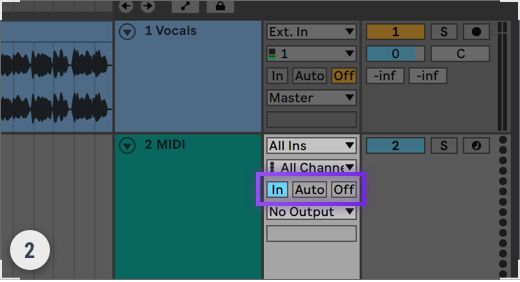
- IZOTOPE STUTTER EDIT NOT WORKING IN ABLETON FULL VERSION
- IZOTOPE STUTTER EDIT NOT WORKING IN ABLETON GENERATOR
- IZOTOPE STUTTER EDIT NOT WORKING IN ABLETON UPGRADE
As soon as you start on the road to Stutter Edit 2, you'll be able to create sounds.Īn upgraded Distort module, a new Comb, Chorus, Limiter module, and a new Reverb module from BT's personal collection add to 11 different effects, from lo-fi delightful to eye-catching tape stops. The new AUTO mode makes it easy to experiment with the sounds of your mix and fire gestures without the need for routing.You can also easily connect your MIDI controller using an online help system that detects your DAW and provides step-by-step setup instructions.With professionally designed presets, you'll be ready to add cinematic rises, exciting transitions, club filter sweeps, and more to your work.
IZOTOPE STUTTER EDIT NOT WORKING IN ABLETON FULL VERSION
The full version of Stutter Edit 2 is also available.
IZOTOPE STUTTER EDIT NOT WORKING IN ABLETON UPGRADE
Upgrade Note: This is an upgrade for those with Stutter Edit 1 or Creative Suite 1. With Stutter Edit 2, you can enhance your work and get bottomless inspiration in one plug-in.

IZOTOPE STUTTER EDIT NOT WORKING IN ABLETON GENERATOR


Of course, this scenario draws direct comparison with Native Instruments and Tim Exile's collaboration on The Finger, another program designed to manipulate incoming audio with a few keypresses, which was originally used by Exile in his live sets. Stutter Matrix: Determines the beat divisions that are available to the Stutter module.Effect Gain: Adjusts and modulates the volume of the effected audio.Dry Gain: Sets and modulates the amount of unprocessed audio heard.Lo‑Fi: Reduces the sample rate, for subtly or wildly degrading your signal.Bit Reduction: Adds crunchiness to the incoming audio by lowering the bit depth.Delay Band‑pass: Creates dub‑style filtered delays in the left and right channels.High‑pass Filter: Removes the lower frequencies of your audio signal.Low‑pass Filter: Knocks out high‑frequency content of incoming audio.Stereo Delay: Adds echo and modulates the delay times for the right and left channels.Buffer Position: Cycles through different sections of audio stored in the buffer.Jump Pan: Creates Gestures that swing back and forth across the stereo panorama.Gate Width: Chops rhythmic holes of varying length in your source material.Quantize: Rhythmically steps through different beat divisions in the Stutter Matrix.Stutter: Loops sections of audio in a style similar to Live's Beat Repeat.A drag‑and‑drop system would have sped things up considerably.

However, it must be said that I found the Preset Manager a little clunky, as copying, pasting and deleting involves right‑clicking and selecting the appropriate command from a menu. From here, you can create new banks and rearrange the Gestures within them, placing them on different keys until you find the perfect layout. Stutter Edit's preset structure: a bank consists of one or more Gestures assigned to individual MIDI notes. Every bank contains up to 128 Gestures, each tied to a MIDI note in the range C2 to B8, as shown on the right‑hand side of the window. When you're happy with the new effects, click the Preset Manager button near the top of the screen and a new window appears, showing the available banks in the left‑hand column. To do this, simply press a key to bring up a Gesture's settings, then adjust your chosen parameters, before saving them as a new preset. Once you've explored the presets, you'll no doubt want to modify them or even create your own from scratch.


 0 kommentar(er)
0 kommentar(er)
